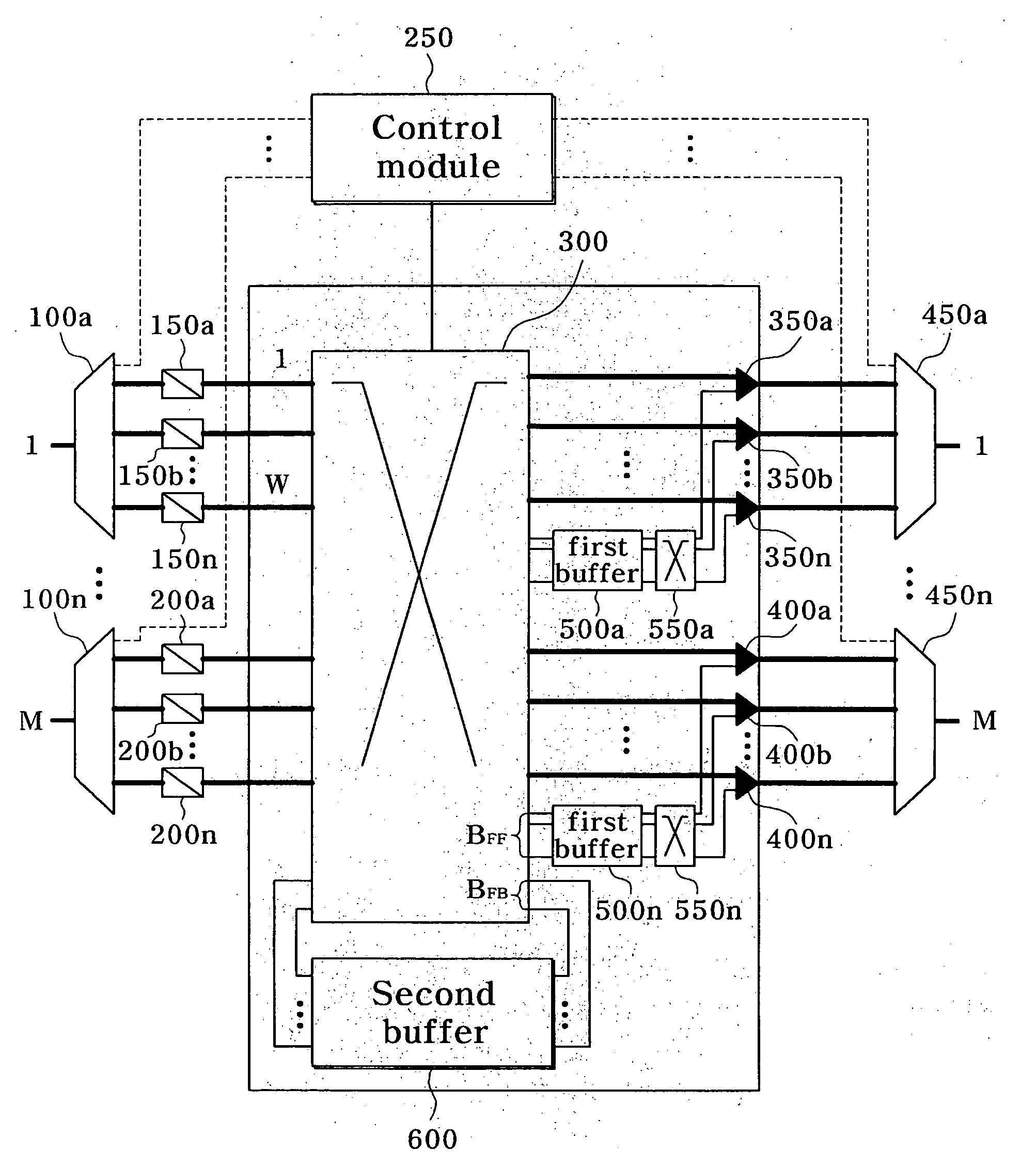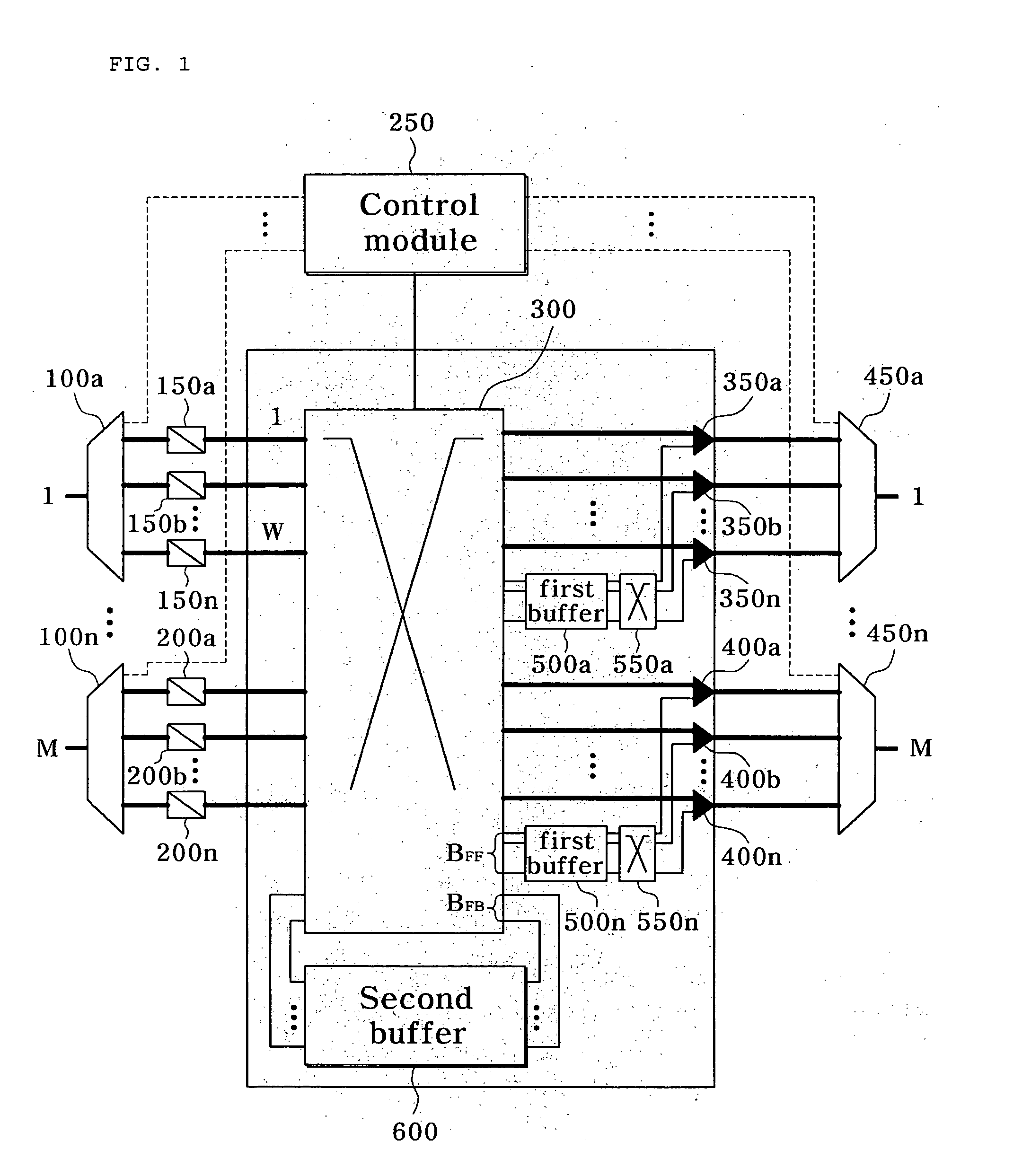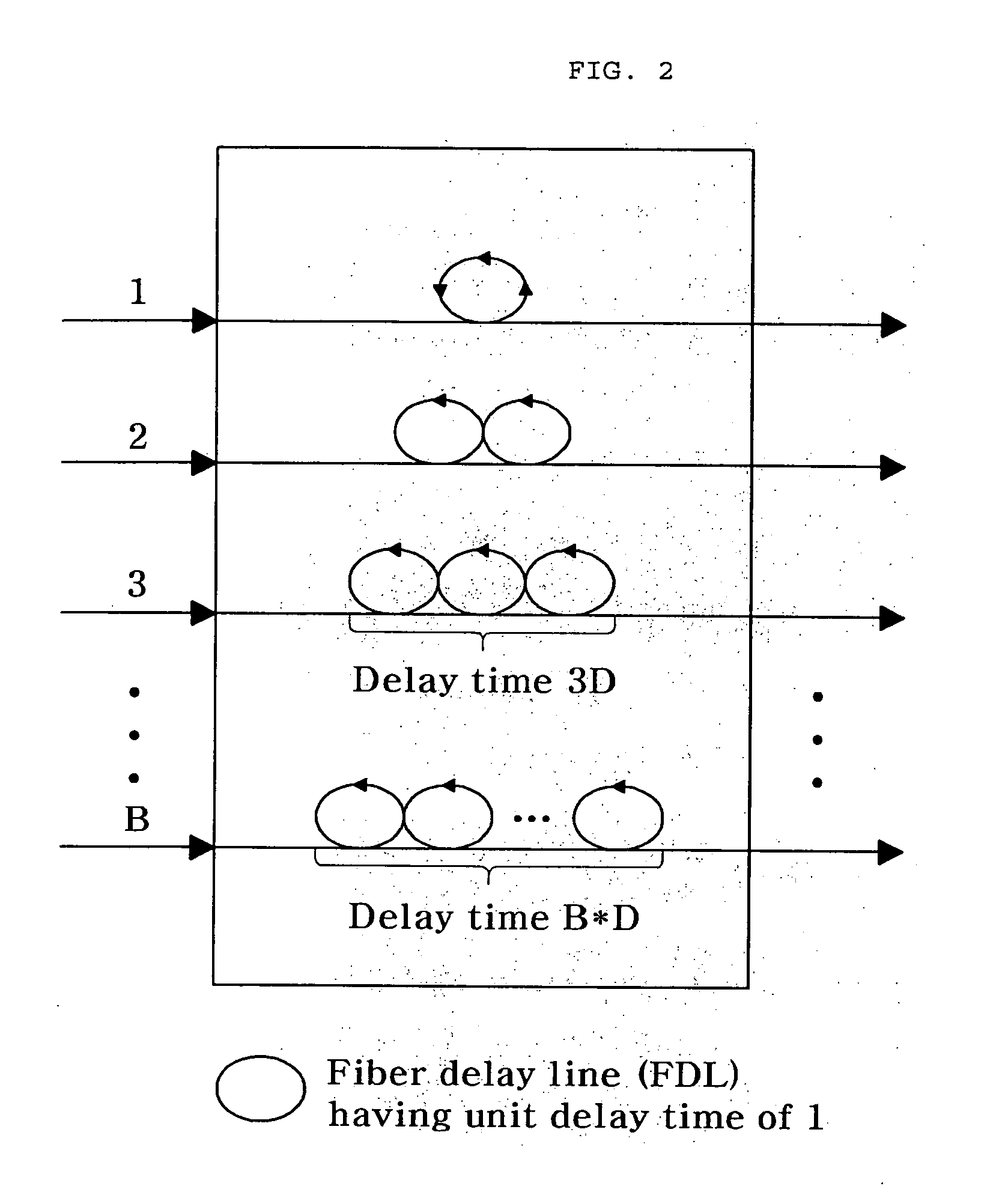Apparatus and method for transferring data bursts in optical burst switching network
a technology of optical burst switching and data burst, applied in data switching networks, instruments, frequency-division multiplexes, etc., can solve the problems of inability to determine the buffer size, inability to transfer data bursts in time, and inability to transfer data bursts efficiently. , to achieve the effect of minimizing delay time, low loss rate and efficient data transfer bursts
- Summary
- Abstract
- Description
- Claims
- Application Information
AI Technical Summary
Benefits of technology
Problems solved by technology
Method used
Image
Examples
Embodiment Construction
[0035]The present invention will now be described more fully with reference to the accompanying drawings, in which exemplary embodiments of the invention are shown.
[0036]FIG. 1 is a block diagram illustrating a node having an apparatus for transferring data bursts in an optical burst switching network according to an exemplary embodiment of the present invention, and FIG. 2 is a conceptual diagram illustrating a structure of first and second buffers according to an exemplary embodiment of the present invention
[0037]Referring to FIGS. 1 and 2, a node having an apparatus for transferring data bursts in an optical burst switching network according to an exemplary embodiment of the present invention includes demultiplexers 100a to 100n, wavelength converters 150a to 150n and 200a to 200n, a control module 250, a first switching unit 300, combiners 350a to 350n, 400a to 400n, multiplexers 450a to 450n, first buffers 500a to 500n, second switching units 550a to 550n, and a second buffer 6...
PUM
 Login to View More
Login to View More Abstract
Description
Claims
Application Information
 Login to View More
Login to View More - R&D
- Intellectual Property
- Life Sciences
- Materials
- Tech Scout
- Unparalleled Data Quality
- Higher Quality Content
- 60% Fewer Hallucinations
Browse by: Latest US Patents, China's latest patents, Technical Efficacy Thesaurus, Application Domain, Technology Topic, Popular Technical Reports.
© 2025 PatSnap. All rights reserved.Legal|Privacy policy|Modern Slavery Act Transparency Statement|Sitemap|About US| Contact US: help@patsnap.com



